Ruins of water parks, remnants of a popular leisure activity that no one claims

Images of the ruins of abandoned water parks in European countries, the United States, and Japan, interspersed with old postcards that show their public success. Photos with a dreamlike, pop, dystopian quality, and absurd violence that don't judge, but point to a range of contemporary themes and debates. Popular tourism , the summer rush, memories, paid leisure with global formats, water waste, the disposable consumption of land characteristic of voracious capitalism, city councils that authorize activities today and forget about them tomorrow. Architect and photographer Pol Viladoms has just published Aftersun (Ediciones Posibles), a book of photos of abandoned water parks that he took on a mind-blowing journey that began in 2009 "by chance," when, returning from the beach, he stumbled upon the remains of the old Aquatic Paradise in Sitges (Barcelona).
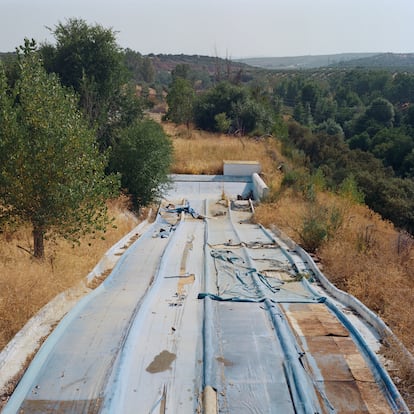
Viladoms was drawn to the symbiosis between the pools, slides, and diving boards and the nature that was taking over. The Sitges park occupied part of a hill, and the space “hooked” him: “The vegetation that embraced the functional structures, the fanciful idea of ancient spaces designed to escape and transport you to another world,” he recalls. The question then became “whether it was an isolated case or had it been replicated elsewhere.” He searched the press, archives, the internet… and up to this day. For the first photos, he chose black and white, but the project eventually ended up in color. With trips between 2010 and 2025, the images were taken with a medium-format square film camera, a Hasselblad, the kind with a top viewfinder that photographers rest on their bodies. He ruled out photos of vandalized parks or parks with graffiti: he opted to capture the passage of time unaltered.
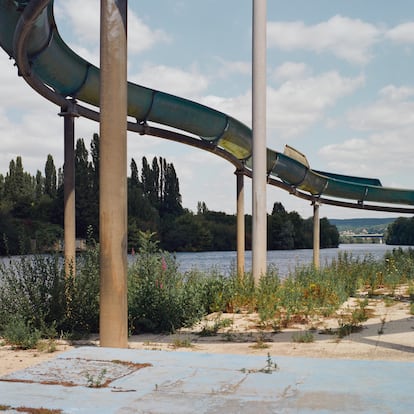
Visits to the parks always had "a wow factor." Some have already been dismantled, others are in bad shape after being occupied, sometimes it's hard to see the pools because they're hidden, and in some cases he found people living in the structures that are still standing, such as showers or lockers, recalls the photographer and architect. In total, he visited 50 locations in Spain, Italy, Greece, Portugal, France, the United States, and Japan. "Very crazy trips" that he made alone, with friends, or as a couple.
The idea of incorporating old postcards of water parks and comparing them with photos of the ruins arose during the forays: "I found everything: souvenirs , postcards, flip-flops, towels, advertisements, tickets..." he recalls with amusement. "For me, the postcards were old images of a past that no longer exists, when going to a pool to have fun was an experience in itself." And they also highlight the value they once had: "They deserve to be remembered with an 'I was here,' even though the parks themselves haven't been given any importance."
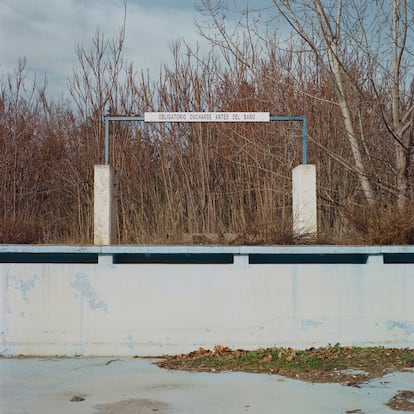
By scanning them in high resolution, the photographer realized “the sub-scenes they contained.” The queues, the pool boys perched on the diving boards, the flips, the lack of inhibition while going down the slides, the parents calling out to get out of the water, the women sunbathing, oblivious to the frenzy… Like a voyeur , he enlarged squares of just one centimeter from the 10x15-centimeter postcards and revealed “the intimate image of a reconstructed memory, perhaps deceptive, that you don't remember precisely.” For years, he searched for postcards of parks at flea markets and found gems like this one: “Dear family, I greet you from this heavenly place, where I am spending my vacation in the company of a large group of friends. Many regards to everyone, Ricardo.”
What's striking about Aftersun is that the photos don't have captions. The location, the name of the park, or the date are unknown. "I liked the idea of not knowing where they are so that they can be read as a continuum, as if it were a single location, because the water park phenomenon is global. The ruins are ruins , no matter where you are; what you see is identifiable with any park; they are standardized, closed spaces, with the same rules." "As a photographer, I'm interested in leaving it open. I like spaces; in this case, they represent a fleeting past and present, and they have many interpretations," he notes. He adds, "A dialogue between two worlds: the photos and the postcard scraps, present and past, emptiness and fullness, reality and memory."
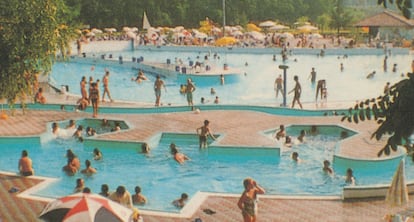
As far as the author has been able to determine, the closures of the parks he has photographed occurred after serious accidents, lack of visitors, competition from other venues, or in disgraced tourist areas. Among the Spanish parks featured are the aforementioned Sitges park, Aquaoliva in Jaén, Aquópolis in Madrid, and Turbogán in Alcossebre (Castelló). The only text in Aftersun is two pages signed by curator and cultural manager Beatriz Escudero.
Pol Viladoms's project will be exhibited during the SCAN photography festival in Tarragona this autumn. Regarding the title, he clarifies that he named the project Aftersun before the multi-award-winning 2022 British film. Both share a slightly desaturated tone with a vintage aesthetic. The photographer explains that most were taken at midday, with short shadows. "It was important to shoot with the same film so the tones were similar, especially since the locations are in different countries, and I tried to make the light in the skies similar as well." The Hassel he used, he adds, belonged to his father, who gave it to him.
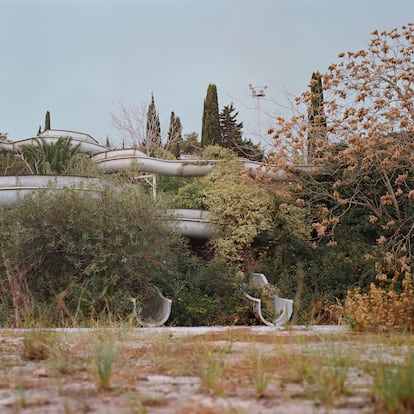
A recent artistic project, "Fin de temporada ," by actress and architect Leonor Martín and architects Aida Navarro and Alejandro Sánchez, also addresses abandoned water parks. Since 2020, they have been visiting closed spaces on the Iberian Peninsula and questioning their economic and environmental sustainability. Contemporary ruins are a very attractive raw material from a photographic perspective. An attraction that invites you to explore their origins, whether through art, anthropology, economics, urban planning, or any other discipline.
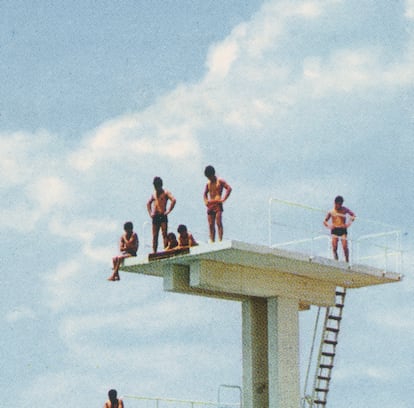
Modern Ruins, a Topography of Profit, was the title of the project by architect and photographer Julia Schulz-Dornburg, published by Àmbit in 2012. It depicts abandoned housing developments with images that make your head explode. Ski slopes next to a town of 100 inhabitants in Valladolid. A mountain of apartments next to a golf course that never operated, in Almería. Orgies of cement. Witnesses to the aftermath of the real estate boom in Spain that the author explored for two years. A legacy in the form of brick scars that invites revisiting now when, as then after the bubble burst, the housing crisis is once again the main topic of social debate.
EL PAÍS

%3Aformat(png)%3Aquality(99)%3Awatermark(f.elconfidencial.com%2Ffile%2Fbae%2Feea%2Ffde%2Fbaeeeafde1b3229287b0c008f7602058.png%2C0%2C275%2C1)%2Ff.elconfidencial.com%2Foriginal%2F60e%2Ff02%2F980%2F60ef029801a55fc5a5403fac3c79d153.png&w=1280&q=100)

%3Aformat(jpg)%3Aquality(99)%3Awatermark(f.elconfidencial.com%2Ffile%2Fbae%2Feea%2Ffde%2Fbaeeeafde1b3229287b0c008f7602058.png%2C0%2C275%2C1)%2Ff.elconfidencial.com%2Foriginal%2Fbf5%2Fa68%2F94c%2Fbf5a6894c718069b2cf6661d5221af9e.jpg&w=1280&q=100)
%3Aformat(jpg)%3Aquality(99)%3Awatermark(f.elconfidencial.com%2Ffile%2Fbae%2Feea%2Ffde%2Fbaeeeafde1b3229287b0c008f7602058.png%2C0%2C275%2C1)%2Ff.elconfidencial.com%2Foriginal%2Fb66%2Fa43%2Fa27%2Fb66a43a273e361121ee09be4485fa559.jpg&w=1280&q=100)